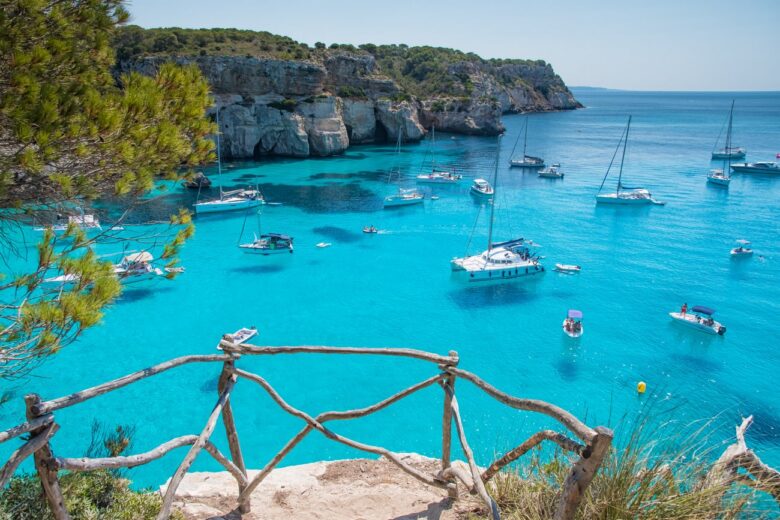
Whatever your holiday interests, in this Menorca travel guide you will find everything you need to know for an enjoyable stay on the second largest of the Balearic Islands.
Having noted the tourist development of its busier neighbours of Mallorca and Ibiza, Menorca has taken a different route. All its economic development is based on minimum disturbance to the island’s environment and nature.
In recognition of this work, in 1993, the island was designated a UNESCO Biosphere Reserve to maintain and safeguard its heritage while developing its tourist economy. A plan it fiercely protects to this day.
Not only that, Menorca is also a UNESCO World Heritage Site, a true open-air archaeological museum with over 1,500 prehistoric Talayotic Culture sites.
My favourite of the Balearic Islands, Menorca sits basking in the west Mediterranean sunshine, and is an island that attracts all ages and holiday preferences.
Sparkling blue seas, warm sunshine and child-friendly powder sand beaches draw young families and those looking for relaxing beach holidays.
In contrast, its lush green interior, sleepy villages, bustling towns, nature reserves, archaeological sites and enticing cuisine, offer culture seekers plenty to see, do and enjoy on their days and evenings out.
Certainly, you can enjoy a late-night pint or a little karaoke in the summer months, but Menorca has deliberately steered away from attracting large groups of 18/30 party people.
They prefer instead to cater for singles, couples, and young and older families who enjoy a more laid-back atmosphere. Visitors who arrive not just to enjoy the bars, but the beaches, coast, countryside and heritage of this beautiful island.
So, without further ado, welcome to my version of the ultimate Menorca travel guide.
When is the best time to visit Menorca
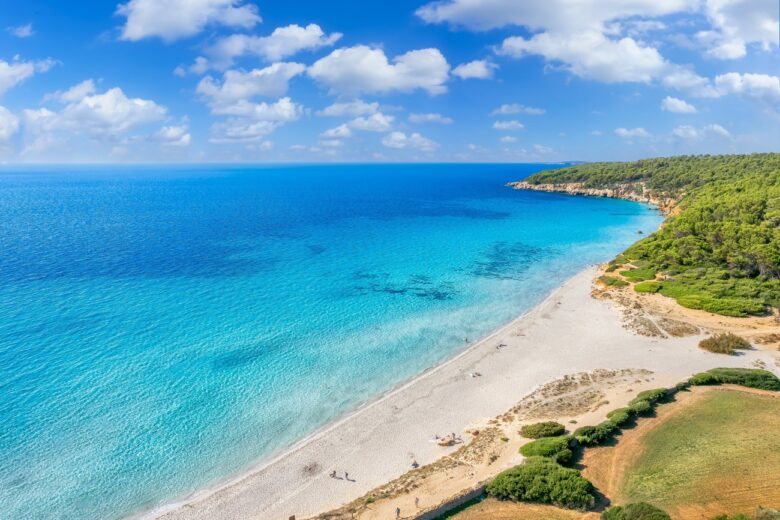
Winter – October through April:
- Menorca is often classified as a ‘seasonal’ holiday island, with many bars, restaurants and attractions in the main resorts closing from mid October to April. Nonetheless, if your holiday preferences aren’t all about suntans and sea, a visit during this period will provide a whole new experience.
- Accommodation is often cheaper, but the big plus, for me at least, is the relaxing tranquillity – far fewer tourists. I can stroll the towns and villages at my own pace, enjoy scenic walks (in a warm jacket) on the almost deserted beaches, and browse the shops, bars and restaurants at my leisure.
- Average temperatures from December through February are a mild 50F to 60F (10C to 15C) with eight to ten hours of daylight.
Low season – May through June, and September – October:
- With accommodation often cheaper than high season, May, June and September and mid October are popular visitor times with older families, senior citizens and short break visitors.
- In May, many facilities are re-opening, and beaches are getting busy, with average temperatures around 25C.
High season – mid-July and August:
- Busy, busy. But not as busy as Mallorca or Ibiza. The kids have broken up from school, and university students begin to party away their gap year.
- Young groups and families enjoy this period, with daily temperatures around the mid to high thirty centigrade.
How much time do you need for your holiday in Menorca
How much time you need will depend very much on your holiday plans. On your first stay you may want to get an idea of what this enchanting island has to offer, with a view to future visits.
In this case, a seven-day break will allow you to combine beautiful beaches with exploring some of the countryside, archeological sites, villages and towns at a reasonably leisurely pace.
Consider hiring a car or using guided tours to make the most of your time.
How to get to Menorca
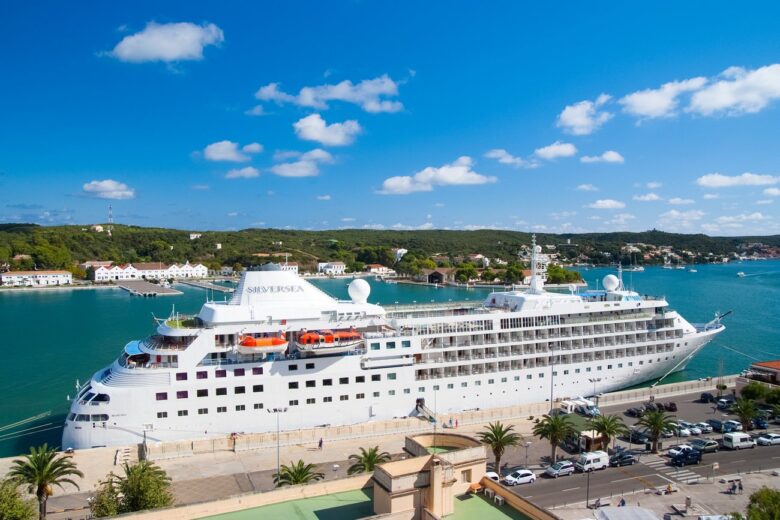
Several airlines fly direct to Menorca’s Mahon Airport from various national and international airports. Mahon Airport is just 4.5km outside the city of Mahon and is the only airport in Menorca.
Ferries to the island are available from Valencia, Barcelona and Mallorca in Spain, and Toulon from France.
Read this article for more info: How to get to Menorca
How to get to your hotel or resort from the Airport
If there’s one thing I like more than a relaxing, hassle-free flight, it’s a relaxing, hassle-free transfer from the airport to my hotel or resort complex.
Transfer options from Mahon Airport include metered airport taxis, shuttle buses to a limited number of resort complexes, resort shuttles, public buses, hire cars and a range of private hire vehicles.
Public buses
With line L10 Maó-Aeroport, you can reach the bus station in less than 10 minutes. The frequency changes in summer and winter, but, in general, there are 1-2 buses per hour. The ticket costs 2,75 euros.
Once at the bus station, you can take another bus to your destination. The lines and schedules of Menorca’s buses vary depending on the season.
Check fares and schedules here: https://menorca.tib.org/es/autobus
Airport Taxi
If you’re staying in Mahon City, an airport taxi will do the journey in around 10 minutes, average cost less than $20. To other destinations such as Fornells $40, Cala Galdana $50 and Ciutadella $60.
Resort Shuttle or Private Hire
For transfers to beach resorts and destinations further out, consider pre-booking a resort shuttle or private hire vehicle to meet your requirements (number of people, baggage, etc). You can book online, and, if you choose private hire, an English-speaking driver will meet you at the arrivals exit.
Car Hire
If you intend to tour the island, pre-book your airport hire car online prior to your trip for the best deals, and to ensure you have a vehicle waiting at the airport.
Getting around on your holiday
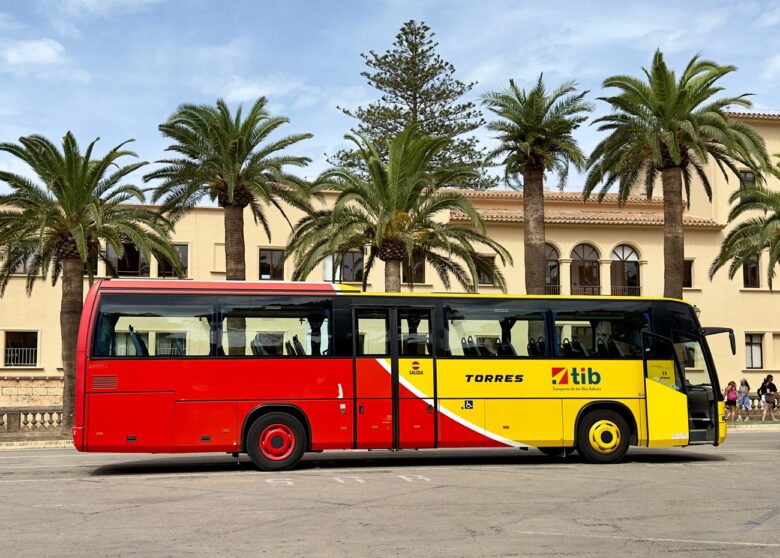
If you’re staying on one of Menorca’s beach resort complexes and want a day away from the sand and sea, your transport options are.
Metered taxi: You will only find registered taxis in Menorca; no private cabs or Uber operate on the island. Cabs are white, signed and metered and can be flagged down or found on taxi ranks around your resort.
You can also book a taxi by phone or online: https://www.taxismenorca.com
Public Transport: Buses from the towns and resort areas are a good, cheap and reliable way to get around. Enquire at your resort information office which route number you need to get to where you want to be.
More info: https://menorca.tib.org/es/autobus
Car Rental: All resort complexes and hotels have car hire facilities where they can organise a rental for a day (or longer). Or you can book one online, which may well be cheaper. In the high season try to book it well in advance.
Costs range from around $13/day for economy, $16/day for intermediate and $50+/day for a premium model in low season. In high season prices skyrocket.
For the younger generation or old bikers, motorbikes and scooters are also available for hire if you still enjoy the feeling of wind in your hair.
Where to stay
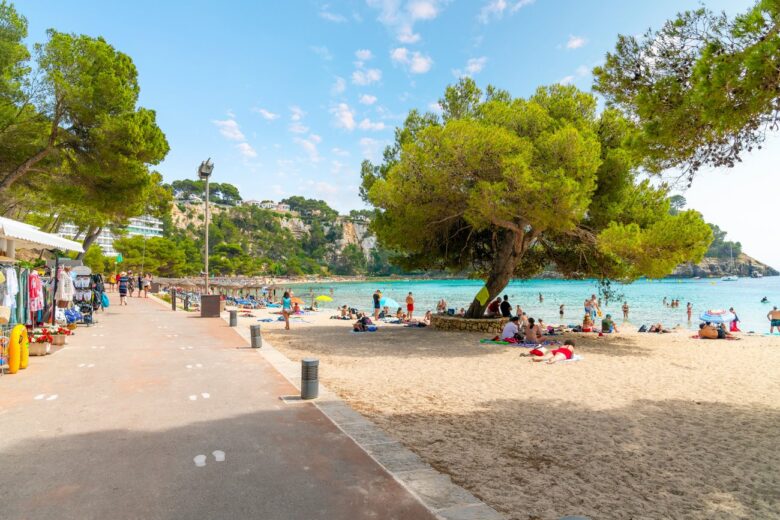
A Menorca travel guide wouldn’t be a travel guide without highlighting places to stay. In this section, I’ve selected different areas where you may prefer to book an apartment, aparthotel, hotel or villa.
Beach resorts:
- If the sand and sea are your ideal holiday preferences, then you’re spoilt for choice in Menorca. With some of the best beach resorts of the four islands, you can choose from: Cala ‘n Bosch – Cala ‘n Porter – Cala Galdana – Punta Prima – Arenal den Castell – Son Bou – Santo Tomas – Son Park and Cala en Blanes.
- A few of the most popular: Son Bou has one of the longest beaches on the island. Cala Galdana sits in a picturesque horseshoe bay.
- And if you want the best of both worlds (city and beach), Cala den Bosch is close to the city of Ciutadella and Cala en Porter is close to Mahon.
Country and Rural Retreats:
- Why not enjoy a romantic spring break in the Menorcan countryside? Hotel pool, first-class restaurant, blissfully quiet with country or coastal walks and plenty of hiking and biking trails. If this is you, check out Menorca Rural Hotels to get a real taste of local culture.
Towns and cities:
- Be close to all the amenities in Mahon or Ciutadella: shops, businesses, markets, attractions, bars and restaurants. Choose from boutique hotels – Airbnb – guest houses – hostels – economy hotels – adult-only hotels – 5-star luxury hotels or sumptuous villas.
Read my guide about accommodation and best areas in Menorca: Where to stay in Menorca
Best beaches in Menorca
There are over 100 beaches spread around Menorca.
Many are large white or gold sand resort beaches with all facilities. Others have retained much of their natural ruggedness with the barest of essentials, while others are known as virgin beaches. Still as nature intended, and only reachable by boat or a tough walk through the countryside.
The north is more rugged and sparse, with darker cliffs and beaches that tend to have coarser, golden sand rather than the white powder sand of the south. Both coasts have beautiful beaches to enjoy.
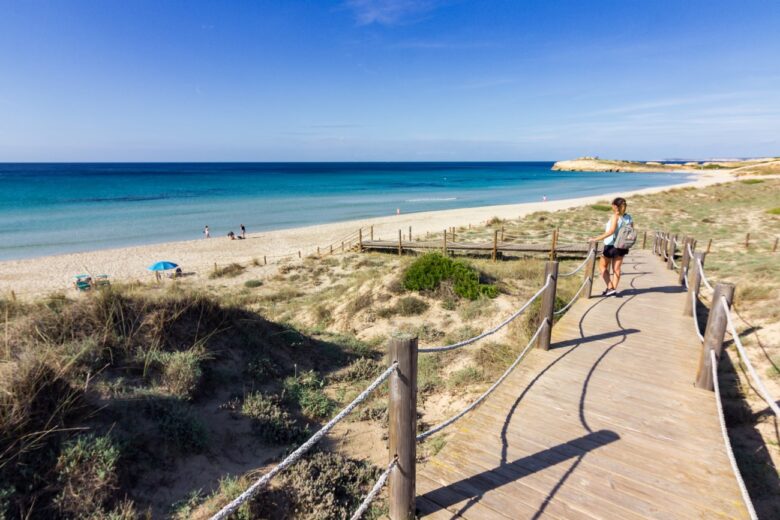
Along the South Coast:
- Son Bou – Cala Galdana – Santo Tomás – Cala en Porter – Binibeca – Punta Prima – Cala Macarella – Cala Mitjana – Cala Blanca – Cala Turqueta – Cala Escorxada – Cala Fustam – Cala Trebaluger.
My favourites: Binibeca, white sand beach, clear turquoise waters with a nearby snack bar and restaurant, Cala en Porter, stunning white sand beach with restaurant and a couple of bars encircled by cliffs and pine forest, and Cala Turqueta, on the south-west coast. Close to Ciutadella and easy to reach by car, taxi or bus. Beautiful white sand and clear blue waters.
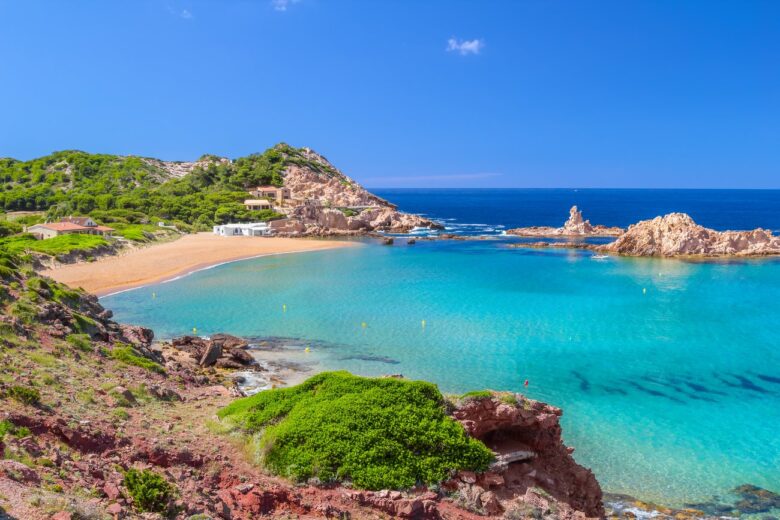
Along the North Coast:
- Cala Pregonda – Cala Tortuga – Cala Viola – Cala Mica – Cala Pilar – Arenal d´en Castell – Son Parc – Cavalleria – La Vall
My favourite: Cala Pregonda. Golden sand, azure blue waters and fabulous views. Untouched (almost) by human hand, so be sure to take snacks and drinks.
Read also: Best beaches in Menorca
What to see and do in Menorca
To give you an idea of what life in magical Menorca is like away from the beaches, I have tried to include things to see and do in the towns, villages, and nature parks.
I have included viewpoints for the photographers, and pointed you in the direction of old fortresses, lighthouses and prehistoric monuments.
For the foodies, I have mentioned some of my favourite bars, restaurants and local dishes you can enjoy that make up the famous Mediterranean diet.
Pay a visit to Menorca’s capital Mahon
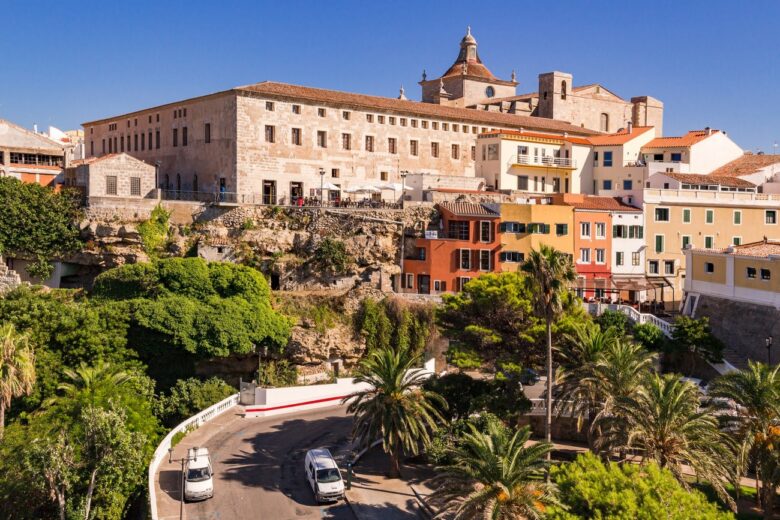
Who doesn’t like exploring ancient cities in the warm Mediterranean sunshine? Mahon was founded as far back as 200 BC and became the island’s capital in the early 1700s.
Besides its narrow streets, squares, and historical buildings, it has the longest natural harbour in Europe at over five kilometres.
Along its wide harbour promenade, you will find chandlery stores, businesses, shops and bars, with several of Mahon’s most popular eateries and seafood restaurants open till late evening. You can also enjoy a number of boat trips around the harbour and further afield.
Other places to explore around Mahon include the Trepuco, a prehistoric Talayotic settlement on the city outskirts, La Mola Fortress guarding the harbour, the Museum of Menorca and for the walkers, the Cami de Cavalls, a 116-mile (186km) hiking trail offering stunning views of the island’s coastline.
Read also: Best things to do in Mahon
Menorca’s most beautiful city – Ciutadella
Ciutadella was Menorca’s major port city and capital until the British gave that honour to Mahon in 1722.
Like Mahon, it is a tight, compact city, ideal for leisurely exploring on foot. And like Mahon, it has a picturesque harbour where you can browse the shops and businesses, before picking a table at one of the numerous bars and restaurants, or booking a harbour boat trip.
Other places to enjoy in Ciutadella include Plaza des Born, the city’s main square with its many historical buildings close by, including the Theatre des Born, the Salort Palace, the Torre Saura Palace and the San Francisco Church.
The Cathedral of Menorca, the Convent of Saint Augustine, the Olive Grove House and the Local Fish Market are all easily reached.
Read also: Best things to do in Ciutadella
Head for Menorca’s favourite fishing villages
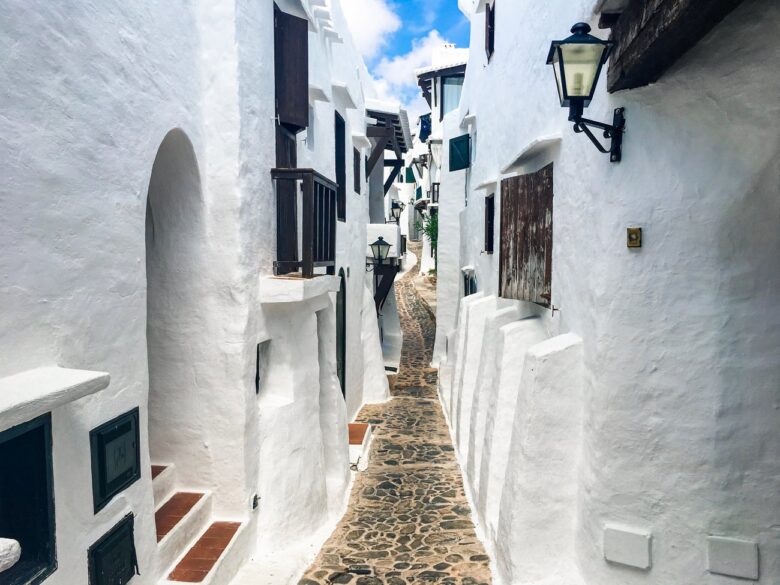
While cities have their own historical elegance, there’s a certain something about traditional fishing villages that seems to take you back in time, and Menorca has a number. You just have to find them.
Binibeca Vell:
- Sitting on the northeast coast, around one kilometre from the beach of the same name, Binibeca Vell is a popular visitor attraction with its traditional fishing boats, small harbour and whitewashed cottages. It also has a few letting apartments for those longer stays.
Fornells Village:
- Another pretty north-coast village. Pleasant harbour, whitewashed apartments and an island-wide reputation for its seafood restaurants and famous lobster stew.
Es Grau Village:
- Is situated at the northern end of the east coast with the S’Albufera des Grau nature reserve to the rear. Semi-secluded and unspoilt, it has three bars and a waterfront restaurant.
Visit the Tombs and Prehistoric Monuments of Menorca’s Talayotic Period

With over 1500 Talayotic sites dotted across Menorca, professional and amateur archaeologists from across the globe arrive to study these prehistoric sites and artefacts – and you can too.
Most sites comprise Taules, the T shape made by balancing one large stone block across the top of another and are thought to have some spiritual significance, Talayots, defensive towers and look-out points, and Navetas, known to have been communal burial tombs.
Some of the best examples can be found at:
- The Trepuco Settlement – Two kilometres outside Mahon
- Biniai Nou, Megalithic Burial Site – five kilometres outside Mahon
- Taula of Torralba d’en Salord – Talayotic village located between Mahón and Alaior
- The Settlement of Talatí de Dalt – close to Mahon
- The Necropolis of Calescoves – Calascoves Beach
- The Naveta des Tudons – close to Ciutadella
- The Taula de Torretrencada – also close to Ciutadella
- The Torre d’en Galmés – the best-known and largest Talayotic settlement
There are numerous ways to visit the sites, including organised tours, public transport, taxis, or hiring a car.
For the twitchers and nature lovers
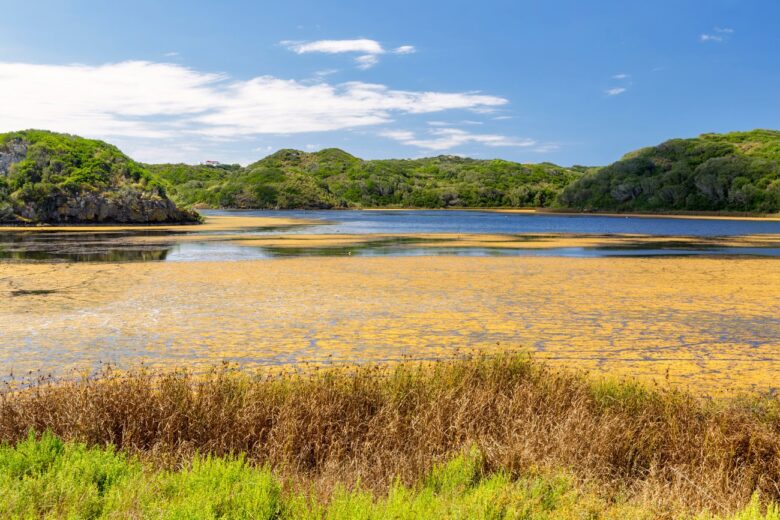
The Island of Menorca’s biosphere comprises a nature park, five nature reserves, a marine reserve and nineteen nature areas of special interest. With the jewel in the crown being the Albufera des Grau Natural Park.
The Albufera des Grau Natural Park: Covering over 5,000 hectares in the island’s northeast, it contains several fincas run by Menorcan artisans producing traditional products, wetlands, numerous hides for bird watching, forest and a two-kilometre-long lagoon.
Guided tours are available to see megalithic buildings, Roman artefacts, forests, fields and cliffs. And of course the wildlife and birds.
Ornithologists flock here year-round to spot resident and migrating species that arrive to feed and breed in the park, such as cormorants, fish eagles, herons, common coot, whistling duck, royal duck, vultures, peregrine falcons, kite and numerous wading species.
For the Photographers – Some of the Island’s Best Viewpoints
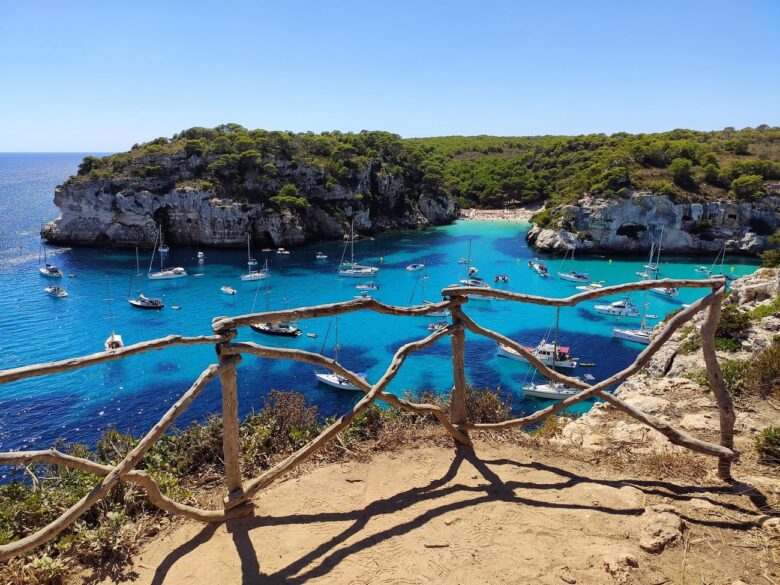
Whether standing on the peak of a mountain, clifftop, high hill, minaret or a rooftop terrace, the surrounding views are often breathtaking. Menorca has incredible viewpoints, and I’ve picked out four to give you a taste of what to expect.
Mount Toro:
- Sitting in the middle of the island and with the 1670 convent and sanctuary dedicated to Nuestra Señora de Monte Toro on its summit, it is one of Menorca’s most important spiritualist structures.
- It is also the highest point on the island, at 365m above sea level. From the car park, it is a ten-minute hike to the top and provides stunning 360° views of the island.
Cavalleria Lighthouse:
- Located atop cliffs on the north coast, Menorca’s oldest lighthouse was built in 1857. At over 100m above sea level, it provides striking photo opportunities of the island’s rugged north coast. From the car park it is an easy ten-minute walk to the clifftop.
Macarelleta Viewpoint:
- Sitting in the district of Ferreries on the south coast, the viewpoint is reached with a therty-minute walk from Cala Galdana. It is a clifftop viewpoint, and the views looking down into the bays are exceptional.
Cala Morell Viewpoint:
- Located on the west coast close to Ciutadella. This viewpoint is not so much about height but more about sunsets, and is a lovely setting to enjoy a cocktail or cold beer as you get that perfect sunset shot. Access is easy from the car park.
Water sports for the whole family
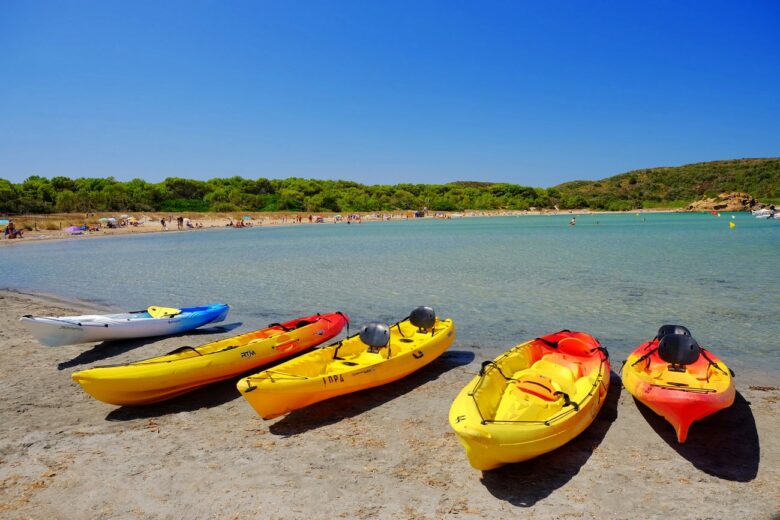
Although the island focuses very much on its marine environment, you can still find plenty of places to enjoy a wide range of water sports, from paddle boarding to kayaking, jet-skiing, scuba diving, and sailing.
Most of the popular resort beaches offer water sports,have pedalos and boards for hire, and a number hire out scuba gear. One of the most popular places to practice water sports is Fornells.
Here, you can practice an extensive range of water sports for adults and kids, including paddle boarding, kayaking, dingy sailing, and windsurfing.
Hike the Cami de Cavalls
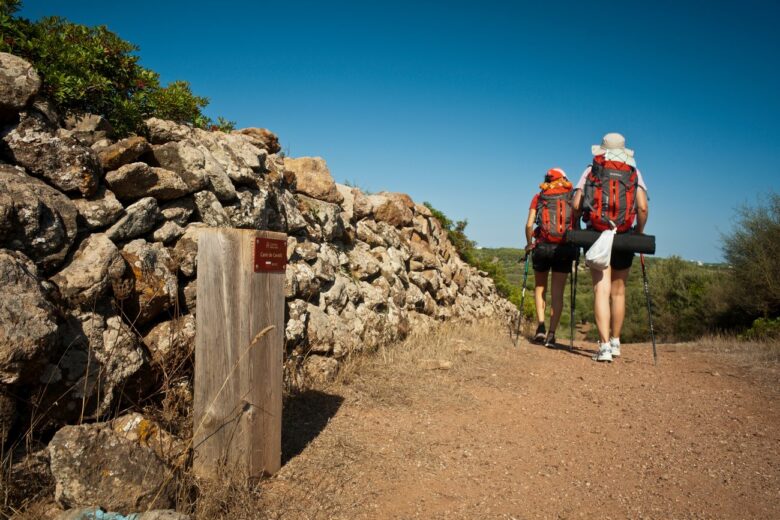
The Camí de Cavalls in Menorca is a scenic coastal path stretching 185 kilometers, encircling the entire island. This ancient trail offers a captivating blend of history, nature, and adventure. Originally established for defense purposes by the British in the 18th century, it’s now a beloved hiking route.
Make the kids’ day – with a visit to one of Menorca’s Water Parks
Sometimes, a change is as good as a rest. Menorca has three main water parks, and all are open from May to October.
Aquarock Waterpark Menorca: Located in Cala en Bosch, Ciutadella. Aquarock has a wave pool, slides and flumes to suit all ages, jacuzzi, sunbathing areas, restaurants, snack shacks and much more. Open 10.30 to 18.00. from May 7th to 29th September.
Aqua Centre Park Acuatico Menorca: Located at Cala en Blanes, offering numerous slides, kamikaze, black hole, water shuttles, water castle, jacuzzi, bar, snack bar, eatery, sunbathing areas and gardens. Open 10.00 to 18.00 from May 1st to October 15th.
Splash Sur Menorca Waterpark: Located in Urb. Biniancolla, Sant Lluis. Splash Sur Waterpark has an excellent range of slides suitable for the young to adults, a lazy river and a unique water play area for the very young.
Facilities include sunbathing areas with free sun loungers and parasols, toilets, lockers, shops, medical teams, lifeguards, restaurants and buffet. Open 10.00 to 18.00 from May 1st to October 14th.
Take the pressure off, and consider using Organised Tours
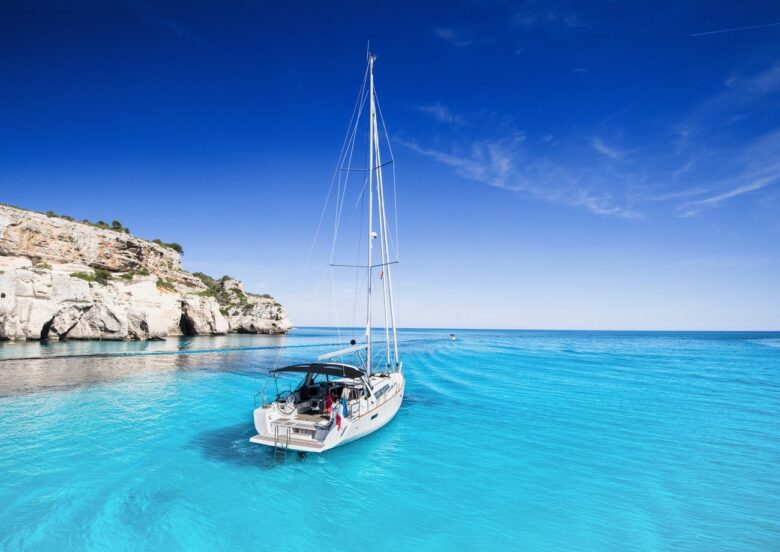
Many people prefer to have their days pre-planned, and choosing to book organised tours you can do just that. As you would expect staying on a small island, a lot of Menorca’s organised tours involve boat trips.
But you can also book tours of the towns, villages and cities, book tours to different beaches, and tours to explore the island’s prehistoric Talayotic sites.
To give you an idea of what’s available, I’ve highlighted a few of the most popular trips available.
- Mahón: Gin Distillery Tour with Tasting & Appetizers
- Mahón: Explore Mahon harbour on a glass-bottom boat. Duration one hour.
- From Ciutadella: Natural Coves and Beaches Boat Trip & Paella Lunch. Explore the southern coast of Menorca and enjoy a Mediterranean paella for lunch with sangria.
- Menorca: Island Discovery Jeep Tour. Enjoy some of the most scenic landscapes of the island. Duration three hours
- From Fornells. A half-day trip sailing a catamaran through part of the north marine reserve. Maximum ten people. Duration three hours.
- From Fornells. Sail the north coast, anchor on virgin beaches and enjoy a swim in clear blue waters. Duration three hours.
- Full day island tour. Visit Ciutadella, Fornells, Monte Toro and Torralba. Hotel pick-up and return. Duration seven hours.
- Menorca: Kayak and Marine Reserve Snorkeling Adventure.
- Ciutadella: Wine tasting and guided winery tour. Duration one hour.
- From Cala Galdana: Hidden Gems of South Coast Cruise. Sail through Cala Macarella and Macarelleta, Turqueta, Mitjana, Mitjaneta, Trebalúger and more. Swim into the blue waters.
This is just a small selection of available trips, and many come with hotel/resort pick-up and drop-off, and English-speaking guides.
Enjoy your downtime in bars with a view and fine-dining restaurants
Wherever you stay in Menorca’s towns, villages or beach resorts, you’re never that far from a bar or restaurant that will become your favourite.
Whether it’s a drink with a view or a little fine dining, here is the Menorca travel guide’s take on a few well worth a visit.
Bar Peri: Located in Migjorn Gran: Varied menu including tapas, fish, calamari, lasagne, crepes, pancakes and sandwiches. They do a good Sangria and the usual beers and spirits. Open 7.00am to 11.00pm
Sunset Beach Bar: Situated in Playa de Son Bou on the south coast. Primarily a bar with a view of Menorca’s longest beach selling all the usual drinks, including cocktails and Sangria. Open 9.30am to 11.45pm.
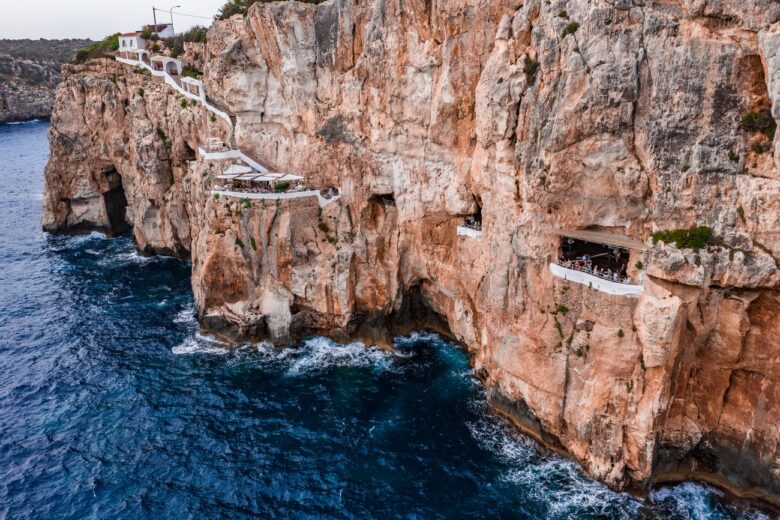
Cova d’en Xoroi bar and disco: Located at Cala en Porter, it is a unique bar carved out of the rocks. Daytime entrance costs $12.90, and $15 sunset time. In the evening, disco entrance is $30.
Sa Falua Cocktail Bar, Mahon harbour: A great little bar for those after-dinner drinks. There is an indoor terrace and a small outdoor terrace so be quick, and grab a waterside table to watch the harbour light up as the sun goes down.
Es Cranc, Fornells village: A famous, highly popular seafood restaurant alongside the beach specialising in lobster dishes, including the famous caldereta de langosta menorquina (lobster stew).
Café Balear Restaurant, Ciudadela harbour: Café Balear is a popular, well-known seafood restaurant where you can dine al-fresco beside the water. Specialities include tapas starters, lobster with onion, fried crayfish, monkfish, swordfish carpaccio and lobster stew.
Smoix Restaurant, Ciutadella: Smoix is a pleasant, boutique hotel restaurant open to non-residents and highly thought of by local and visiting gastronomes. Only local, seasonal produce is used, with legumes added when products are scarce.
El Rais restaurant, Mahon harbour: Mentioned in the 2023 Michelin Guide, El Rais is a restaurant with a difference, specialising in fusion dishes of rice, seafood and meats. You can enjoy starters, sharing plates, raw seafood or beef dishes, rice dishes, mains, and desserts.
Nightlife in Menorca
Although Menorca is certainly quieter than its louder sisters across the water, it still has enough lively bars and clubs where you can party until the late early hours.
Most of the late bars and clubs can be found around the harbour areas of Mahon and Ciutadella, with a few scattered around the resort areas of Cala en Porter (the most famous club in Menorca, Cova d´en Xoroi, is located here) and Son Bou.
In the most popular bars and club venues you can expect everything from House and Garage, to the 70s, 80s and 90s classics for the young at heart, to Salsa and Latin beats. One word of warning, these venues don’t start getting busy until eleven or midnight.
Menorca travel guide daily itineraries
If daily organised trips make too big a hole in the holiday finances, you may prefer to hire a car and do things in your own time. The daily hire rate should reduce the longer you hire the vehicle.
Maps of the island will be available from tourist offices, hotels and apartment reception. My advice is, don’t try to cram too much into each day. Keeping the itinerary loose gives you greater flexibility should you decide to spend not one hour at a stop, but two.
Secondly, jot down your travel plans on a daily basis. That way, if rain or inclement weather is forecast for the following day, it’s easy to change your plans. Who wants to be trudging round an archaeological site in a downpour when they could be enjoying a coffee in a village café.
The following are just a couple of examples of daily itineraries, assuming I based myself in Cala Galdana, a popular resort area on the south coast.
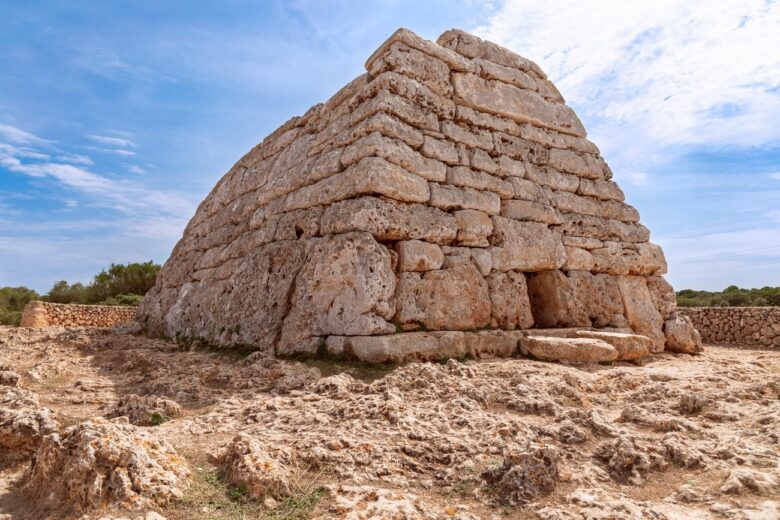
Daily Itinerary 1
- Head for the beautiful beaches of Macarella and Macarelleta and get your feet wet in the shallows
- Drive to Ferreries town. (Inland, the highest town in Menorca)
- Pay a visit to the Naveta de Tudons, 3 miles out from Ciutadella
- Head for Cala Morell beach and its red cliffs
- Make your way to Ciutadella for a leisurely stroll around the old town
- Enjoy sunset at Pont d’en Gil
- Head back to Cala Galdana. Park up the car and jot down tomorrow’s route over a couple of beers.
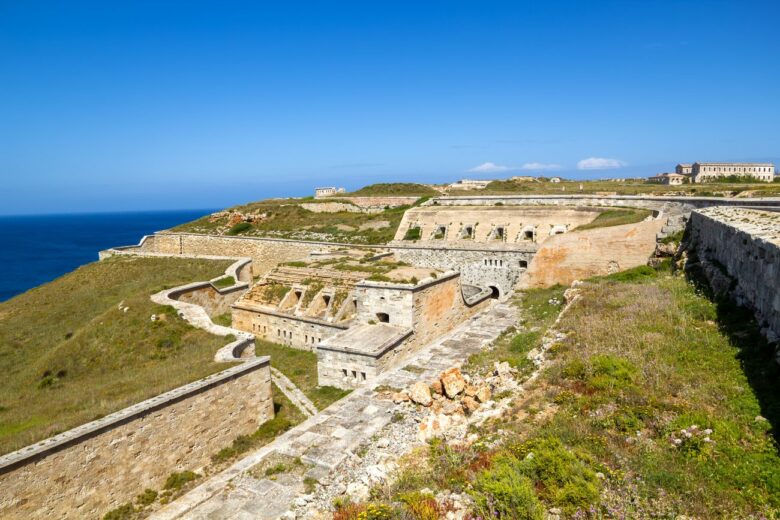
Daily Itinerary 2
- Take a drive up to Binibeca Vell, a pretty village by the sea.
- Visit Mahon.
- Explore Mahon’s harbour, enjoy an hour’s boat trip around the harbour, and enjoy a meal at a top seafood restaurant.
- Pay a visit to La Mola Fortress
- Visit the Poblat Talaiotic de Trepucó, one of the island’s most significant prehistoric settlements.
- Enjoy the sunset in Cova d´en Xoroi
- Return to Cala Galdana, and end the evening with a beer in your favourite bar.
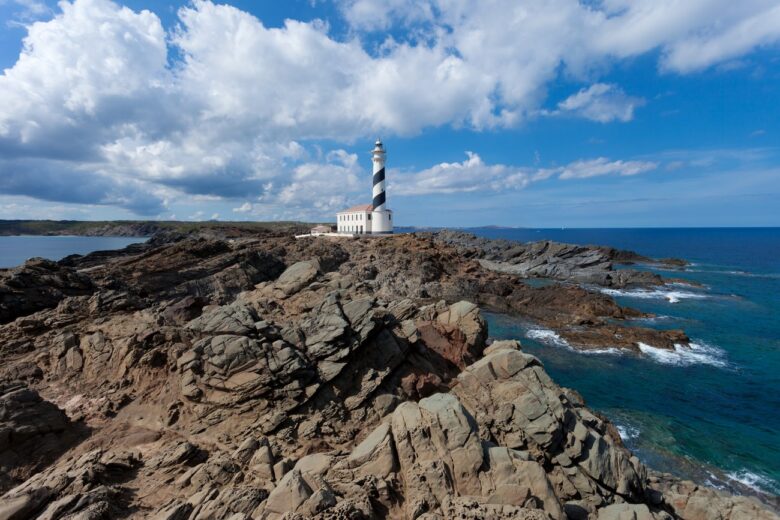
Daily Itinerary 3
- Head up to Monte Toro, the highest mountain on the island and enjoy the view.
- Drive to Torre d´en Galmés, the most famous and best-preserved prehistoric settlement
- Head north to see the Faro de Favaritx
- Enjoy a caldereta de langosta (lobster stew) in Fornells
- Spend the rest of the day in Cala Pregonda
Getting a hire car with GPS will make the touring much easier, and your supplier should be able to set the language to give instructions in English.
What to buy in Menorca
Finally, wherever you choose to holiday, plenty of souvenir shops will offer pens, lighters and fridge magnets, with the usual ‘product of’ or ‘love from’ logo printed on the product. Or, in the case of Spain and her islands, castanets, little black bulls and fans.
But what about those gifts for the special people in your life. Family, or friend who looks after the pets or keeps an eye on your house while you’re away?
You will find an extensive range of genuine Menorcan products in markets, towns and cities that make unique gifts. Leather goods, bags, shoulder bags and accessories. Pottery, ceramics, Avarques or Abarca sandals, and designer and costume jewellery.
You can browse all these products and more at Menorca’s main craft centre, the Centre Artesanal de Menorca, in Es Mercadal, which has a permanent display and holds temporary exhibitions of new products. The centre also has a small retail shop.